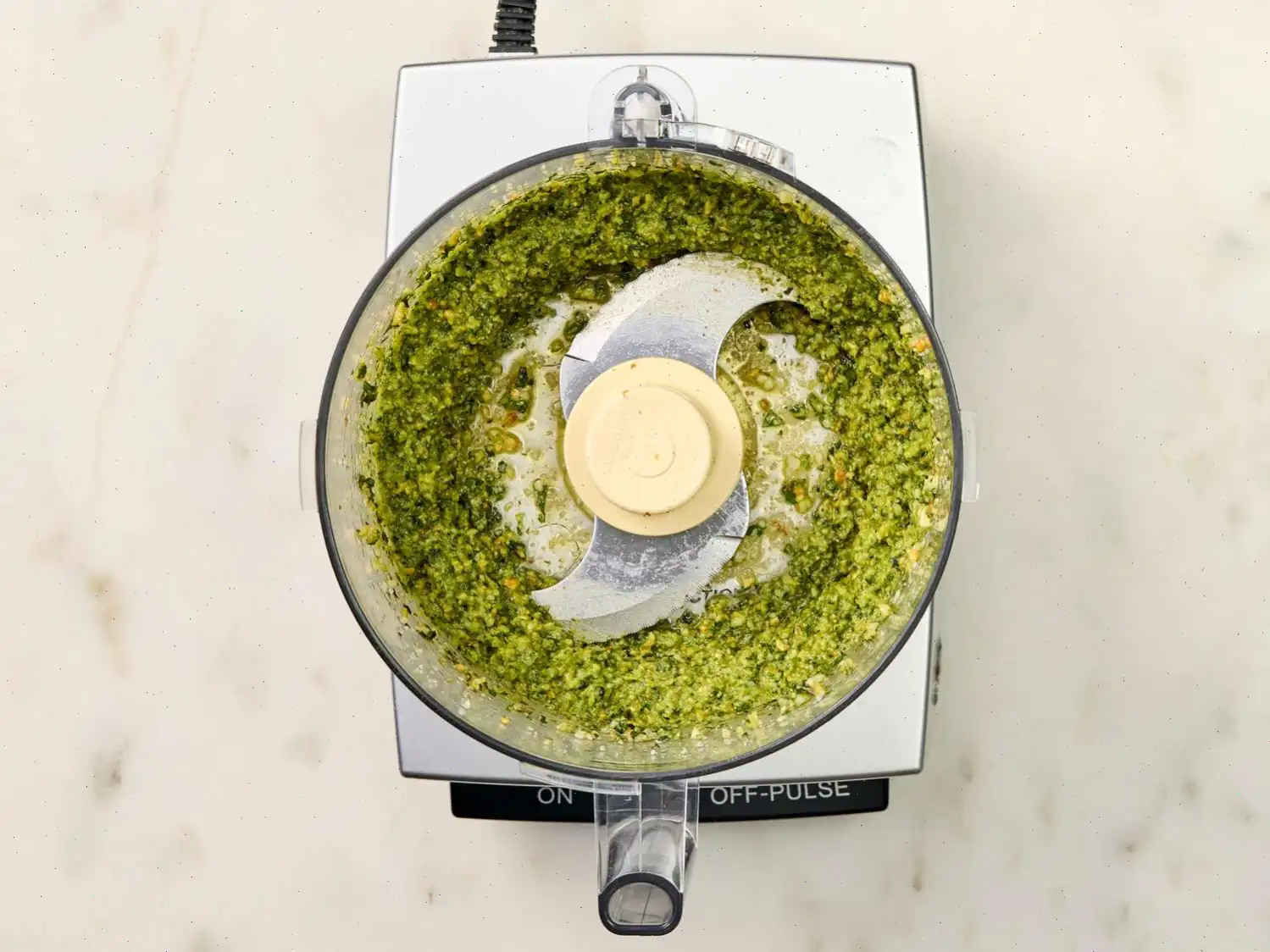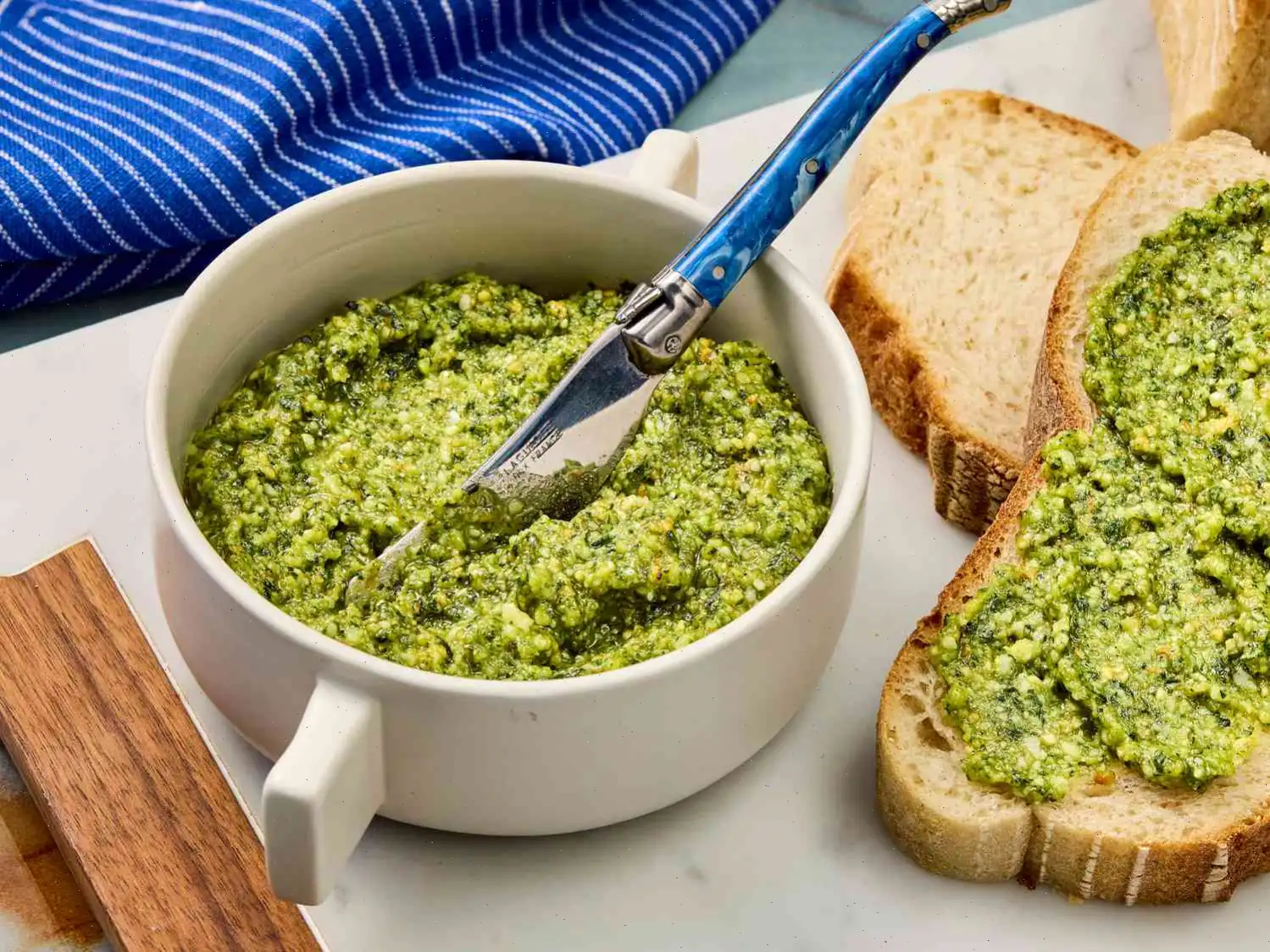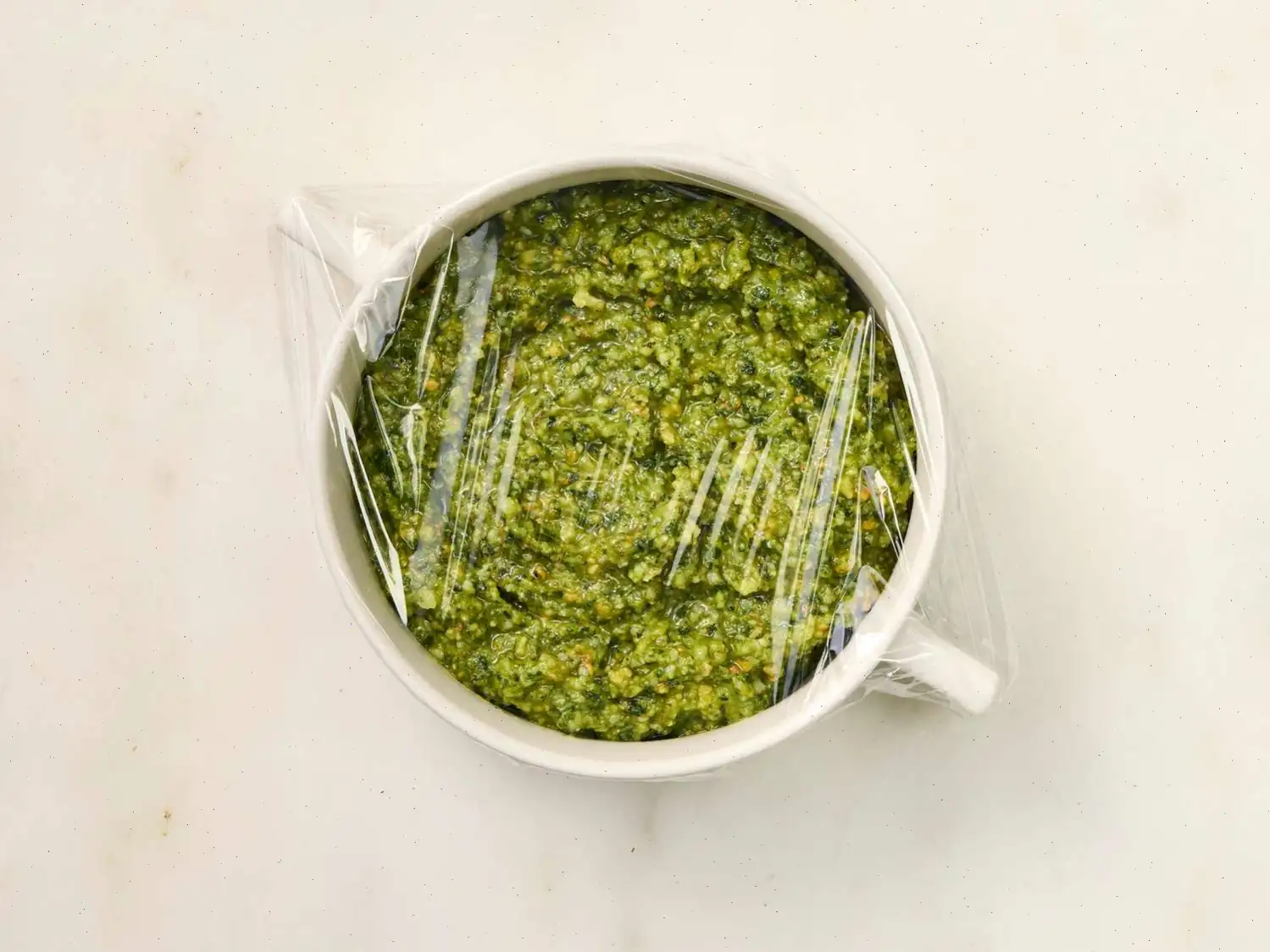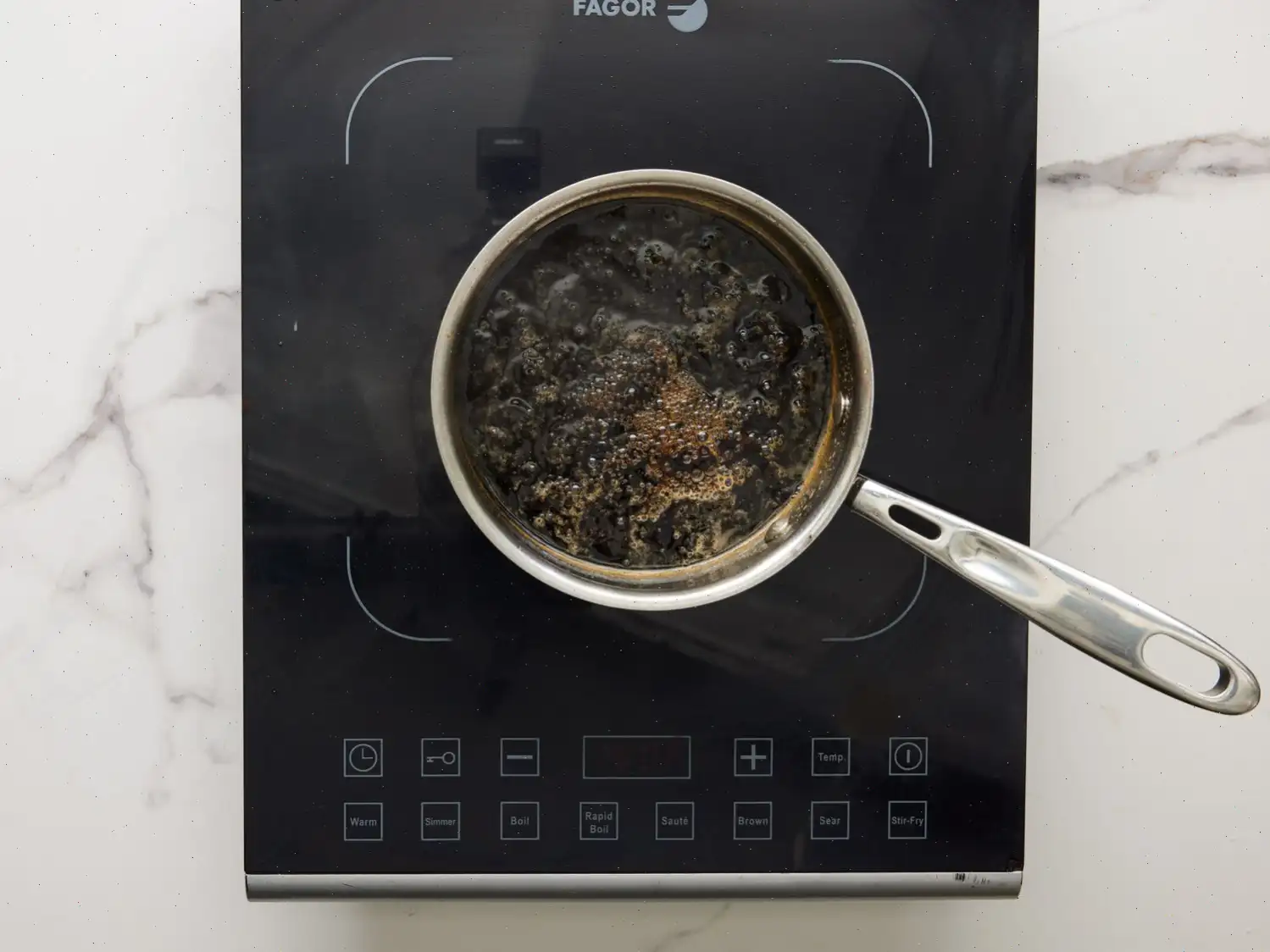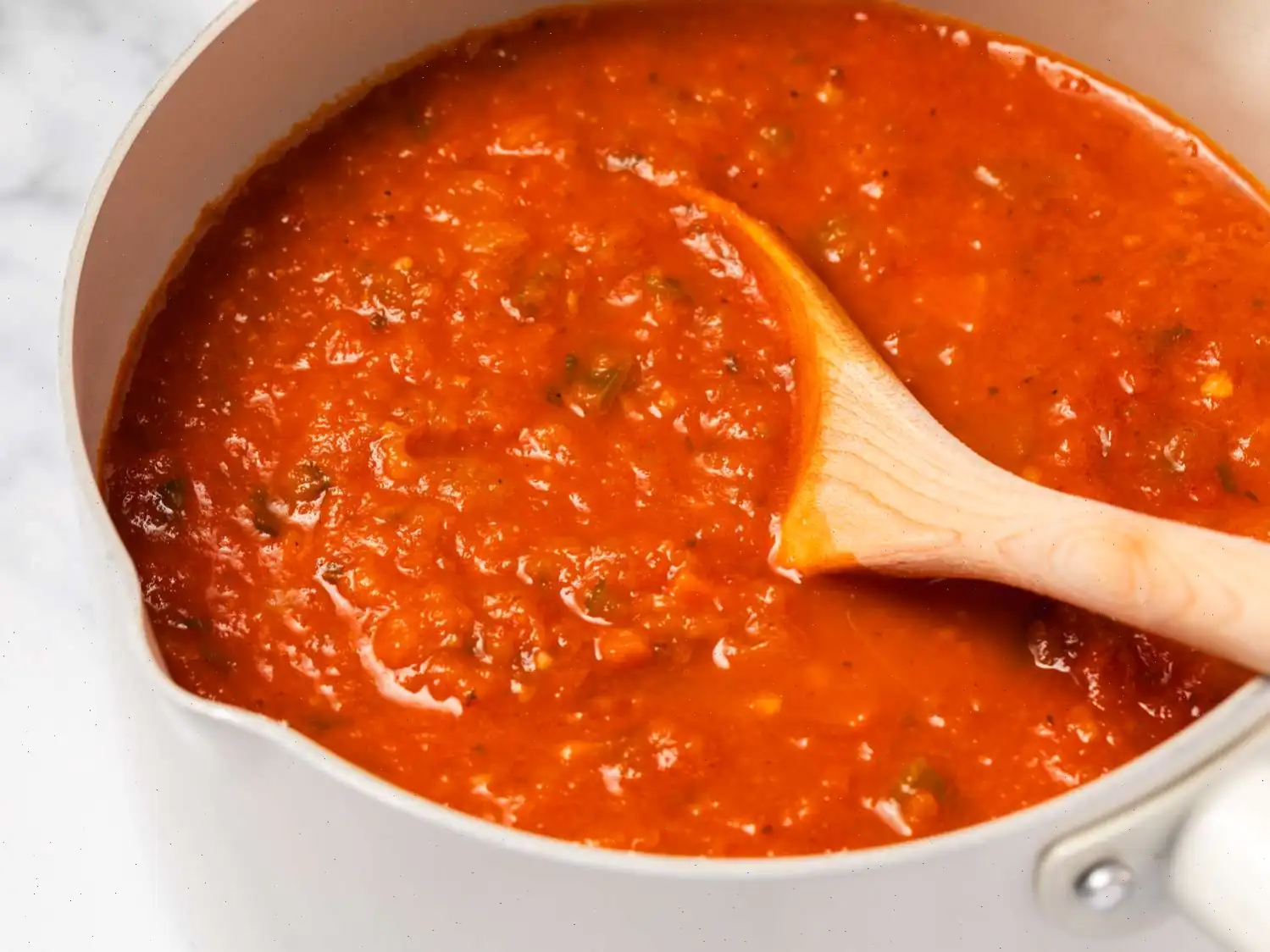
Basil Walnut Pesto Recipe
Pesto with Walnuts and Basil
This vibrant and fragrant pesto, made with basil, toasted walnuts, and Parmesan, is a perfect addition to pasta, sandwiches, or as a dip. It's a simple, fresh sauce with a rich, nutty flavor. Follow the steps below for the perfect pesto!
Ingredients (for 8 servings):
- 1 cup packed basil leaves
- 1/2 cup toasted walnuts
- 2 ounces grated Parmesan cheese
- 1/3 cup extra-virgin olive oil
- 4 cloves garlic
- 1/4 teaspoon salt
Directions:
- Step 1: Gather all the ingredients. Ensure the walnuts are toasted (see instructions below).
- Step 2: In a food processor, combine the basil, walnuts, Parmesan cheese, olive oil, garlic, and salt. Cover and pulse until the mixture becomes nearly smooth.
- Step 3: If the pesto is too thick, add water one tablespoon at a time until the desired consistency is achieved.
- Step 4: Transfer the pesto to a bowl, then cover the surface with plastic wrap to prevent oxidation. Chill in the refrigerator for up to 3 days for the best flavor.
How to Toast Walnuts:
- Step 1: Preheat your oven to 350F (175C).
- Step 2: Spread the walnuts in a single layer on a baking sheet.
- Step 3: Toast the walnuts in the preheated oven for 8 to 10 minutes, or until they turn golden brown and release a nutty aroma.
- Step 4: Allow the walnuts to cool to room temperature before using them in the pesto.
Keep it Green:
If you want to make the pesto a bright green, blanch the basil leaves before processing. Boil the basil leaves for about 30 seconds, then quickly transfer them to an ice bath. Once cool, drain and pat dry before placing them in the food processor.
Nutrition Facts (per serving):
- Calories: 103
- Total Fat: 10g (13% Daily Value)
- Saturated Fat: 2g (8% Daily Value)
- Cholesterol: 2mg (1% Daily Value)
- Sodium: 39mg (2% Daily Value)
- Total Carbohydrate: 1g (1% Daily Value)
- Dietary Fiber: 1g (2% Daily Value)
- Total Sugars: 0g
- Protein: 2g (4% Daily Value)
- Vitamin C: 3mg (4% Daily Value)
- Calcium: 52mg (4% Daily Value)
- Iron: 1mg (3% Daily Value)
- Potassium: 58mg (1% Daily Value)
Percent Daily Values are based on a 2,000-calorie diet. Your daily values may be higher or lower depending on your calorie needs.
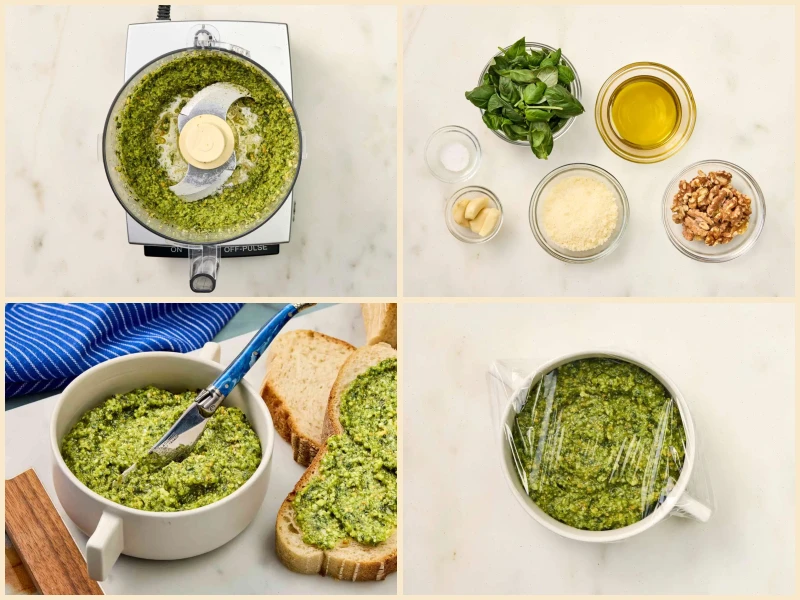
Basil Walnut Pesto is a vibrant and delicious variation of the traditional Italian pesto, where walnuts replace the more common pine nuts. This twist brings a unique flavor profile while retaining the same fresh, herbal richness that has made pesto a beloved sauce worldwide. Let's dive into the history, regional differences, and interesting facts about this dish.
History of Basil Walnut Pesto
Pesto, a staple in Italian cuisine, traces its origins back to Genoa, a coastal city in the Liguria region of Italy. The word "pesto" comes from the Italian verb "pestare," meaning "to crush" or "to pound," reflecting the traditional method of making pesto with a mortar and pestle. Originally, pesto was made with basil, garlic, Parmesan cheese, olive oil, and pine nuts, and it was served with pasta, typically trofie or trenette.
The use of walnuts in pesto is a more recent adaptation, and it is believed to have evolved as a regional variation or as a substitution for the more expensive pine nuts. Walnuts, with their earthy, slightly bitter taste, provide a wonderful contrast to the fresh, fragrant basil and complement the richness of Parmesan. This variation has gained popularity, especially for those who seek a more affordable and nutty alternative to the classic recipe.
Regional Features
While traditional pesto hails from Liguria, the walnut variation can be found across Italy, particularly in regions where walnuts are more abundant. In the northern regions of Tuscany and Piedmont, where walnuts are grown locally, this variant is common. In some areas, the pesto may include additional herbs, such as parsley, or may use different types of nuts like hazelnuts or almonds, reflecting the regional diversity of pesto recipes.
In Genoa, where the original basil pesto is still a point of pride, the classic version remains the most common. However, walnut pesto has grown in popularity due to its distinctive flavor and the accessibility of walnuts in various parts of the world.
How Does It Differ From Similar Dishes?
When comparing basil walnut pesto to other types of pesto, the main difference lies in the type of nut used. The original Genoese pesto, made with pine nuts, is often more delicate and buttery, while the walnut version offers a more robust and earthy flavor. The texture of the walnut pesto may also differ slightly, as walnuts are larger and less smooth than pine nuts, giving the pesto a slightly thicker, more rustic consistency.
Another variation of pesto is sun-dried tomato pesto, which uses sun-dried tomatoes as the base ingredient instead of basil. While both types of pesto are used as sauces, the tomato-based pesto brings a tangy and slightly sweet flavor, making it quite different from the savory, herbal notes of basil walnut pesto.
Where Is Basil Walnut Pesto Typically Served?
Basil walnut pesto is incredibly versatile and can be served in many ways. It is most commonly used as a sauce for pasta, such as spaghetti, linguine, or penne. It can also be spread on sandwiches, added to pizza, or drizzled over grilled vegetables for an extra layer of flavor. For a lighter option, it works wonderfully as a dip for crackers, crostini, or fresh bread.
It also pairs excellently with seafood, such as grilled shrimp or seared scallops, adding a fresh and earthy contrast to the richness of the shellfish. Additionally, pesto can be mixed into soups, such as tomato soup, to enhance the flavor with a burst of herbal richness.
Interesting Facts About Basil Walnut Pesto
- Health Benefits: Walnuts are packed with omega-3 fatty acids, antioxidants, and fiber, making walnut pesto a heart-healthy alternative to traditional pesto. It provides a nutrient-rich option without sacrificing flavor.
- Quick and Easy: Basil walnut pesto can be made in just a few minutes using a food processor, making it a go-to option for a quick and flavorful meal addition.
- Seasonal Availability: Basil walnut pesto is perfect for using fresh basil in the summer, but it can also be made year-round using basil from the grocery store or even home-grown herbs.
- Creative Variations: You can customize your walnut pesto by adding different herbs, such as mint, oregano, or arugula, or by experimenting with different nuts, like hazelnuts or almonds.
- Storage Tips: Basil walnut pesto can be stored in the refrigerator for up to 3 days or frozen for longer storage. To prevent the pesto from turning brown, you can drizzle a thin layer of olive oil on top before sealing it in an airtight container.
Whether you enjoy it with pasta, as a dip, or as a topping for meats and vegetables, basil walnut pesto offers a fresh twist on a classic Italian favorite. With its rich, nutty flavor and versatility, it's no wonder this pesto has become a beloved option in kitchens around the world.
FAQ about Basil Walnut Pesto Recipe
Comments
Jack Smith
03/10/2023 09:04:24 PM
I didn't modify this recipe at all. It has a fresh and clean taste. I intend to use it in my homemade tomato soup.
Kelly Rodriguez
11/29/2023 03:19:48 PM
On my first attempt, I accidentally burned the nuts. However, I gave it another try using pine nuts instead, and the result was absolutely outstanding. Since our garlic cloves were quite large, I only used three of them. What a winning combination!
Paul Flores
12/02/2023 06:23:03 PM
Super fast and simple! The thick texture is perfect for spreading on crostini or crackers. Absolutely delicious.
David Hall
10/01/2024 03:39:50 AM
I also included some salt in the dish.
Matthew Jones
10/10/2022 07:45:18 PM
This recipe was simple and delicious. My sauce turned out a bit thick, so I mixed in some extra olive oil. I opted for fresh garlic for its digestive benefits, but also incorporated dried garlic, salt, and freshly ground pepper for more flavor. I tossed this sauce with angel hair pasta and grilled shrimp, and the outcome was fantastic. This recipe is definitely a keeper.
Justin Diaz
02/14/2023 10:31:56 PM
Super simple and absolutely tasty. This recipe is my favorite choice every time.
Christine Harris
10/04/2022 03:04:26 PM
So simple yet incredibly delicious! I opted for two cloves of garlic to achieve a more subtle flavor, and it turned out just right for our taste buds.


